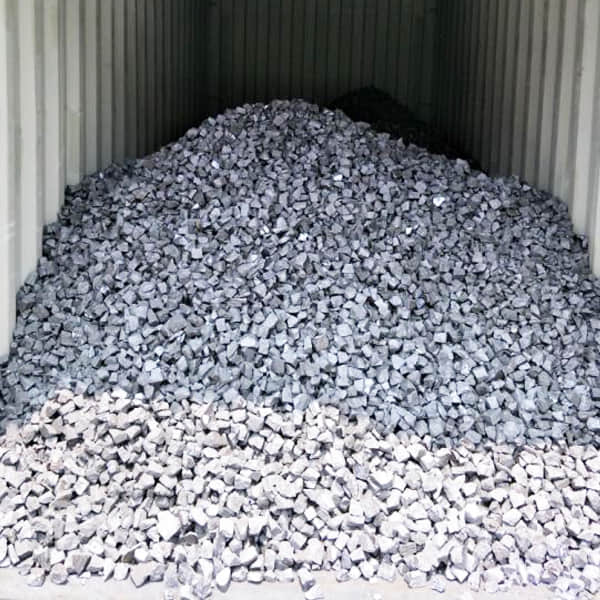Silicon Metal Lumps are generally dark gray and have a metallic luster. Although SIlicon metal looks like a metal, it shows more non-metallic properties in chemical reactions. Its conductivity is between metals and non-metals. It is a semi-metal, that is, a semiconductor property. Silicon is non-conductive below 650°C and is an insulating material; it begins to conduct electricity when it exceeds 650°C, and its conductivity continues to increase as the temperature increases. The melting point of silicon is 1683°C, the boiling point is 2628°C, and the density is 2330 kg/m³.
Production of Si Metal Lumps
Silicon metal is obtained by reducing silica (SiO2) with carbonaceous reducing agents (petroleum coke, washed coal, charcoal, etc.) in a submerged arc furnace. Its silicon content is generally not less than 98.5%. Si content less than 98.5% is off grade silicon metal. Silicon metal is the most important raw material for the production of organic silicon and polycrystalline silicon, and is also a raw material for cast aluminum alloys and deformed aluminum alloys.

Silicon metal is obtained by reducing silica with a carbonaceous reducing agent in a submerged arc furnace. The smelting process is actually the purification of silicon element. The specific production steps are: first, after washing, screening and drying the silica raw materials. Put the raw materials in different proportions according to the reducing agent (petroleum coke, washed coal, charcoal, etc.). Then mix it and add it to the electric furnace. The graphite electrode will heat by electricity for high-temperature smelting. The essence is a continuous electrothermal chemical reaction in a submerged arc furnace.
Silicon Lumps Applications
The industrial silicon produced by different silicon metal producers only differs in the silicon content, impurity content, and particle size. According to Chinese standards, different classifications are based on Silicon and the content of main impurity elements iron, aluminum, and calcium. Common models include silicon metal 553, silicon metal 441, silicon 3303, silicon 2202, silicon 331, etc.
Since silicon metal is firstly went through smelting process, so it must turn into ingots in the first step. Then it will be break into irregular chunks. It is the natural lumps or silicon natural blocks. Then, according to the different uses of the product, it is processed into silicon metal lumps, grains or silicon metal powder. In the metallurgical industry, the largest use of silicon metal is casting aluminum alloy.
Whether it is silicon metal 98.5 with a lower content or silicon metal 1101 with a purity of over 99.79%, they are all good an auxiliary material for aluminum alloys. Silicon in aluminum alloys can improve the fluidity and processing properties of the metal. Silicon metal used for aluminum alloys is usually with the lumps size of 10-100mm. This size is easy to process and transport, and it is convenient to use in molten metal and melts quickly. It is also the standard lumps of metal silicon.
